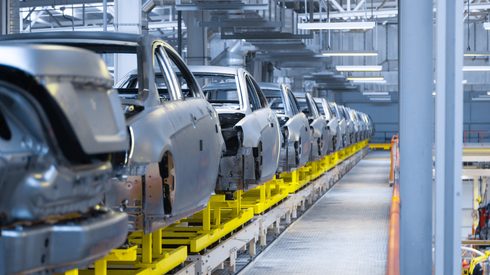We spoke to Amy Bennett, principle consultant at Fastmarkets, about the key factors at play in the graphite market. She addresses supply-demand imbalances in the battery materials market with higher prices expected to encourage more investment in the space and what this means for the electric vehicle (EV) industry.
Watch the full video interview – recorded in late July 2022 – or read on for the key takeaways and Amy’s additional insights into the graphite outlook for 2023 below.
Why is graphite such a key material to the energy transition? What role does it play?
Graphite is key to this whole energy transition story mainly because of its role in the EV lithium-ion battery space. Graphite is the largest component of the lithium-ion battery with about half of a lithium-ion battery comprised of graphite. Graphite is the key raw material in the battery anode with almost all EV battery anodes comprising 100% graphite. So far, much of the interest in the industry has been focused on the lithium, nickel and cobalt side of the sector and that’s really what constitutes the cathode, which is the other half of the battery.
What is the difference between synthetic and natural graphite? How is each used?
As the name implies, natural graphite is the mined graphite, which is then processed into an end-use product that can be used in the battery industry. Natural graphite is primarily mined in China and Mozambique. Synthetic graphite is a more manufactured product produced by utilizing a carbon precursor product, typically petroleum coke, needle coke or coal tar pitch, and made into graphite through a process called graphitization.
We expect both natural and synthetic graphite to be used widely over time. However, we are expecting to see rising natural graphite consumption increase to reflect the cost advantage of using natural graphite, as well as at the same time overcoming some of the ESG considerations.
What impact will tight supply chain concerns have on the energy transition and EV demand?
Over the medium- to long-term, we are going to see some significant tightness and lack of supply in many of these critical battery raw materials, including graphite. However, we don’t expect to see this supply shortage really disrupt the phenomenal growth that we are seeing in the EV battery industry. Instead, we expect to see the higher prices encouraging more investment in the space in terms of new investment in graphite and alternate technologies.
However, we do think there will be some adjustments on the EV side of the industry, with OEMS realizing that perhaps we need to utilize smaller batteries in order to conserve some of these materials. We will also probably see increased charging capacities to cope with these smaller battery sizes, as well as other methods of maintaining the number of EV units produced while minimizing raw material consumption.
What is the outlook for graphite in 2023?
An impending graphite shortage, driven by phenomenal demand growth from the EV battery sector and delays to new capacity, as well as rising power costs, the drive by new entrants to develop renewable power supply sources, and the need to meet increasingly stringent environmental controls and restrictions will all lead to significantly higher graphite prices in the coming years. This will reflect both incredible underlying market demand and higher costs associated with graphite production. Fastmarkets expects to see an increasingly dynamic graphite market in 2023, demonstrated in our forecasts for notably higher prices next year.
Understand the dynamics of the graphite market
Keep up with the latest news, market intelligence and trends in the graphite market when you visit our dedicated graphite market page.






